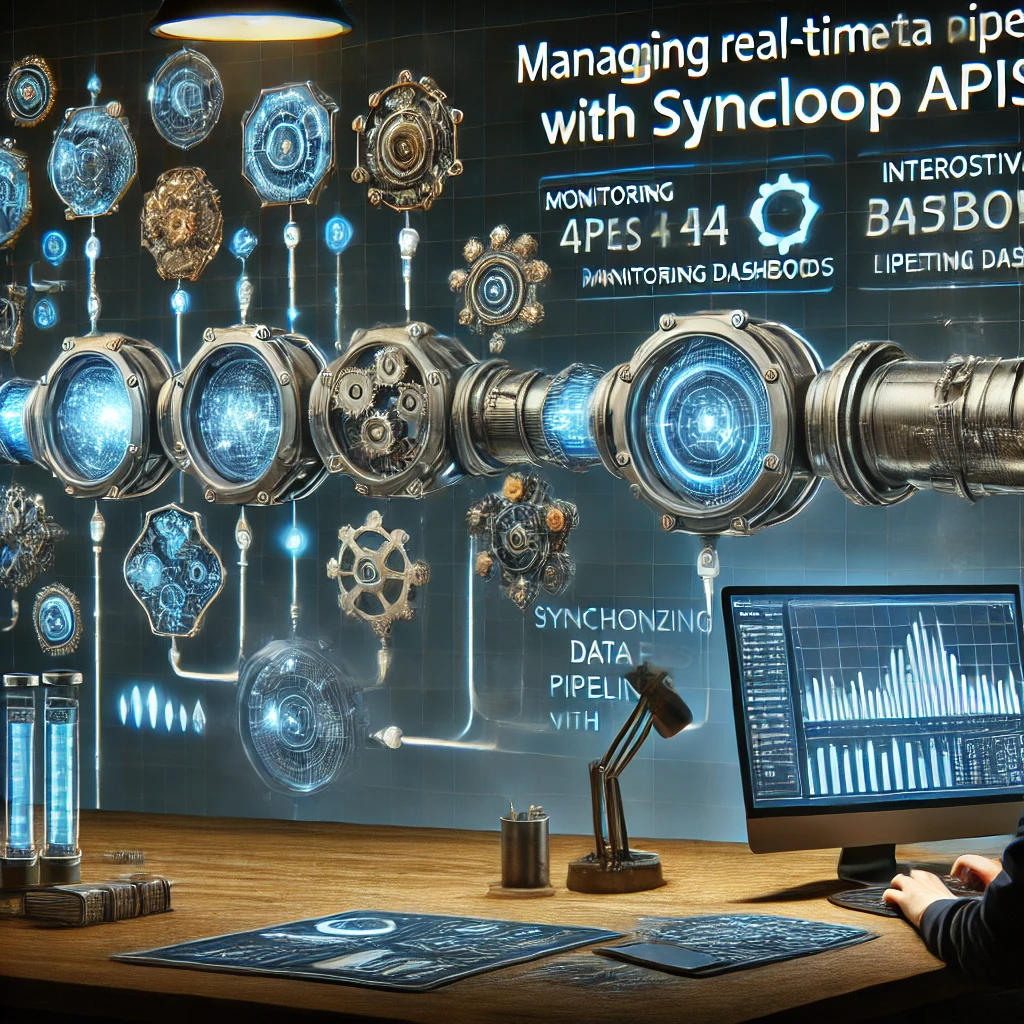Managing Real-Time Data Pipelines with Syncloop APIs

Importance of Real-Time Data Pipelines
Real-time data pipelines provide:
- Instant Insights: Enable immediate decision-making by processing data as it arrives.
- Operational Efficiency: Automate data movement and processing, reducing manual intervention.
- Scalability: Handle growing volumes of data without compromising performance.
- Data Consistency: Ensure that data remains accurate and synchronized across systems.
Syncloop empowers developers to design robust data pipelines that meet these requirements effortlessly.
Key Features of Syncloop for Real-Time Data Pipelines
1. Workflow Automation
Automate data ingestion, transformation, and delivery with Syncloop’s visual workflow designer.
2. Event-Driven Architecture
Trigger workflows dynamically based on real-time data events, ensuring immediate processing.
3. Data Transformation
Use Transformers to normalize, enrich, and prepare data for downstream systems.
4. Real-Time Monitoring
Track pipeline performance and identify bottlenecks with Syncloop’s monitoring tools.
5. Scalable Infrastructure
Handle high-throughput pipelines with Syncloop’s scalable and resilient architecture.
6. Error Recovery Mechanisms
Implement retry controls and fallback workflows to recover from transient errors.
Steps to Manage Real-Time Data Pipelines with Syncloop
Step 1: Define Data Sources and Destinations
- Identify the sources of real-time data, such as:
- IoT devices.
- Databases.
- Streaming platforms (e.g., Kafka, RabbitMQ).
- Determine destinations, such as:
- Data lakes or warehouses.
- Analytics platforms.
- Real-time dashboards.
Step 2: Configure Data Ingestion
- Use Syncloop to set up API endpoints for data collection.
- Define authentication and connection parameters for secure ingestion.
Step 3: Design Transformation Workflows
- Use Transformers to:
- Enrich raw data with metadata or external information.
- Standardize formats for consistency.
- Aggregate data for downstream analytics.
- Incorporate Ifelse controls to handle specific data scenarios conditionally.
Step 4: Enable Event-Driven Processing
- Configure workflows to trigger automatically on:
- New data arrivals.
- Changes in source systems.
- Use Syncloop’s event-driven architecture to minimize latency and maximize efficiency.
Step 5: Monitor Pipeline Performance
- Use Syncloop’s real-time monitoring tools to track:
- Throughput and latency.
- Error rates and retry counts.
- Analyze metrics to identify and resolve performance bottlenecks.
Step 6: Implement Error Handling
- Use retry mechanisms to manage transient data ingestion or processing errors.
- Configure fallback workflows to handle persistent issues, such as logging errors or alerting administrators.
Real-World Applications
1. IoT Data Processing
- Use Case: Collect, process, and analyze sensor data for real-time monitoring.
- Features Used: Event-driven workflows, scalable infrastructure, Transformers.
2. E-Commerce Analytics
- Use Case: Streamline order, inventory, and user activity data into analytics systems for real-time insights.
- Features Used: Workflow automation, data transformation, monitoring tools.
3. Financial Market Analysis
- Use Case: Aggregate and analyze real-time stock market data for trading platforms.
- Features Used: Low-latency architecture, error recovery, dynamic triggers.
4. Healthcare Monitoring
- Use Case: Process patient vitals from wearable devices to detect anomalies in real time.
- Features Used: Event-driven architecture, Transformers, secure APIs.
Best Practices for Managing Real-Time Data Pipelines
- Optimize Data Flows: Minimize latency by optimizing data transformation and routing.
- Monitor Continuously: Use real-time insights to track pipeline health and resolve issues proactively.
- Scale Dynamically: Prepare for spikes in data volume with Syncloop’s scalable infrastructure.
- Ensure Data Security: Protect sensitive data with encryption and robust authentication methods.
- Document Pipelines: Maintain clear documentation for workflows and configurations.
Why Choose Syncloop for Real-Time Data Pipelines?
Syncloop provides an intuitive and powerful platform for managing data pipelines. Its features for workflow automation, real-time monitoring, and error handling make it an ideal choice for building efficient and scalable data solutions.
Conclusion
Real-time data pipelines are the backbone of modern applications, enabling seamless data movement and processing. Syncloop simplifies the complexities of pipeline management, helping developers create reliable, scalable, and secure solutions. By leveraging Syncloop’s capabilities, you can unlock the full potential of your data and drive impactful insights.
Back to Blogs